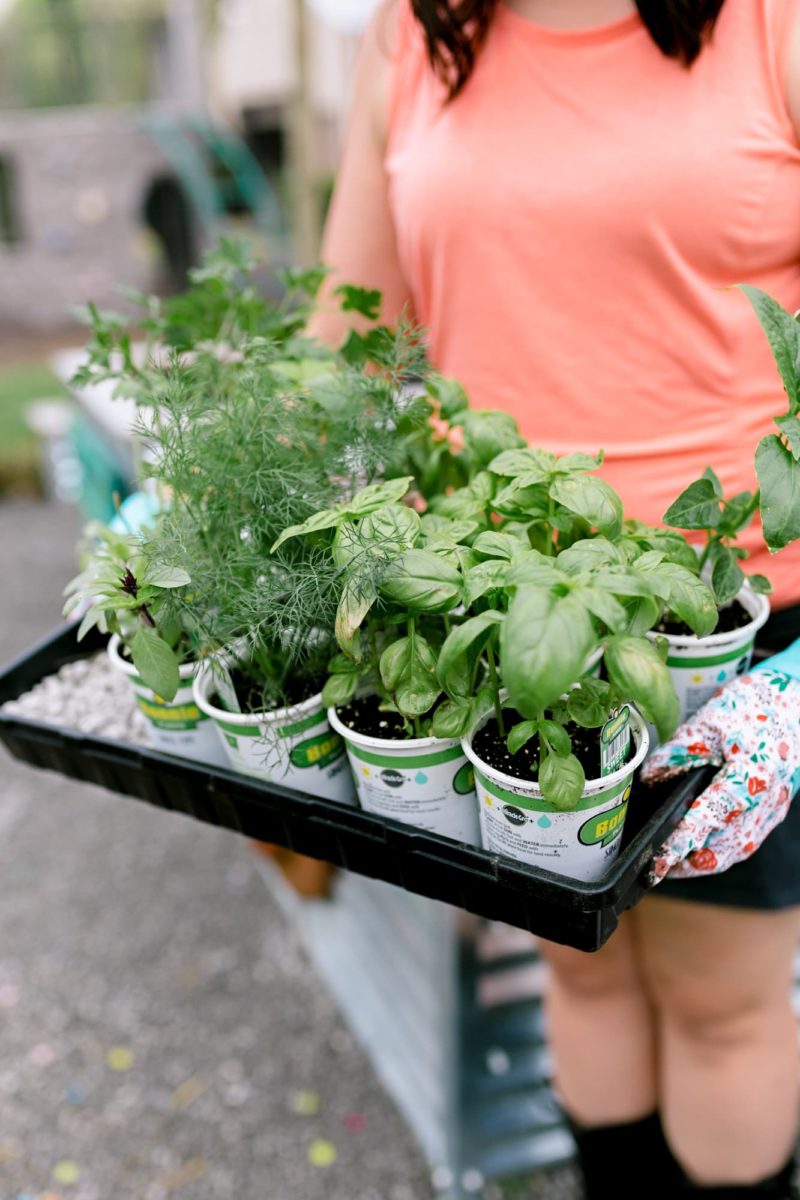You’ve done the research and picked out exactly what you want to grow, so now it’s time to get your hands on some plants—either by purchasing or growing. We’re going to cover the entire how-to for starting seedlings in another post, but first let’s dig into how to make sure you get the healthiest, happiest plants around if you choose to buy.
How to Buy Healthy Seedlings
If you’ve chosen to buy seedlings, the method for picking your plants is pretty simple—walk in and do some shopping! I’ve had the best luck buying my plants at our local vocational school. They do a huge greenhouse sale every spring with the very best seedlings you can get in my area.

I’ve had hit-or-miss luck with seedlings at big box stores—it honestly depends on the dedication of their garden center attendant. If you get a good one who cares about plants (and knows how to not over- or under-water), they can be great. If you get someone who isn’t invested, the plants can be less-than-stellar. When looking for healthy seedlings, look for these things:
- Sturdy, stocky plant with a thick stem: You might think you want the tallest plant there, but that is not the case—taller plants are often what gardeners call “leggy,” which means they didn’t get enough sunlight early on and stretched to reach the sun. This leaves a weak stem that can easily break and not support a plant. It’s way more important to have a thick, strong stem over a taller one. This also applies to plants that head like cabbage or lettuce—the base of the plant should be right up against the soil.
- Green leaves: Any discoloration of leaves—yellowing, purpling, spotting, mottled—can indicate a nutrient deficiency, over- or under-watering, or a disease. All of which can be remedied, but again, it’s best to get plants that are already off to a great start.
- Blooms and fruit: If you really want to jump ahead of the game, seek out a plant that has blooms or even fruit on it. It’s not a guarantee that those will turn into something you can eat (plants often go through something called “transplant shock” and lose any fruit or blooms on the plant), but it is an indicator that the plant is mature enough to start producing—which means harvesting veggies even sooner! Once things get going in the summer, all the other plants will catch up quickly, so no worries if you can’t find a blooming/fruiting seedling, but if you do, you might be harvesting tomatoes 2-3 weeks before your neighbors do.

What Not to Buy in Seedling Form
You’d think that everything the store sells in seedling form would do just fine when you plant it—nope. They grow and sell what people buy, and they hope that people don’t know what they don’t know! Here are the veggies I recommend direct sowing from seed:
- Carrots, beets, parsnips, radishes, any root vegetables: Any vegetables with a big tap root needs to stay in place once they are planted. Plant these from seed right in the garden (called “direct sowing”). The good news is that these vegetables tend to thrive in colder weather, so you can plant the seeds directly in the ground even before your last frost date.
- Peas: Just like root veggies, peas are a cool weather crop that hate to be transplanted, so direct sow these. In our zone, we plant peas on St. Patrick’s Day—an entire 6 weeks before our last frost date.
- Corn: For such a tall plant, corn has incredibly shallow roots (hence why you might have seen corn blown down in the field after a bad wind storm). Corn can be transplanted with care, but it’s just way simpler to plant it where you’re going to grow it—there is no advantage to getting them going earlier.
- Melons, cucumbers, and squash: These vegetables don’t love to be transplanted, but you can do it in a pinch—like if you live in an area with a shorter growing season. Beyond that, they grow so quickly that it’s almost a waste of your time to bother starting them indoors if you live in a warmer climate.
- Beans: Similar to the melons, beans aren’t a huge fan of being transplanted and they are super speedy growers. Even shorter growing seasons can get a full crop of both bush and pole beans easily in a summer. Direct sow these.







